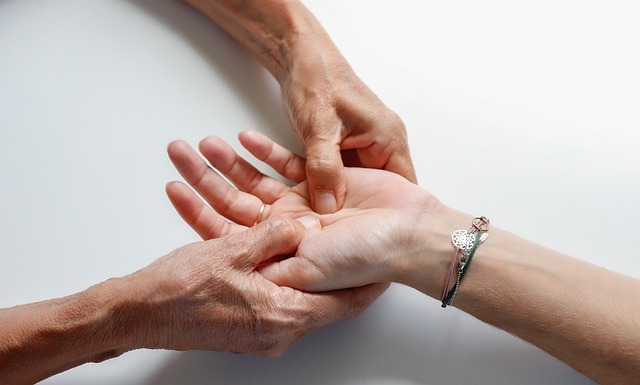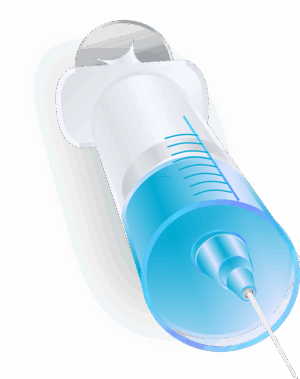Post-traumatic stress disorder (PTSD) is a mental health condition caused by traumatic events, leading to symptoms like flashbacks and avoidance behaviors. Effective treatments include specialized psychotherapy techniques such as cognitive-behavioral therapy (CBT), eye movement desensitization and reprocessing (EMDR), and integrative approaches that combine CBT with EMDR. Support groups and lifestyle changes, including exercise, diet, sleep, mindfulness, and social connections, also play vital roles in healing. Regular assessment, motivation, and goal-setting guide the treatment process, empowering individuals to manage symptoms and improve their quality of life.
Trauma and Post-Traumatic Stress Disorder (PTSD) are significant mental health challenges, often requiring specialized psychotherapy for effective recovery. This article explores comprehensive strategies for managing PTSD, from understanding its impact to evidence-based treatments like Cognitive Behavioral Therapy (CBT) and Eye Movement Desensitization and Reprocessing (EMDR). We delve into integrative approaches, the power of support groups, lifestyle changes, and techniques for tracking progress, offering a holistic guide to effective PTSD treatment.
Understanding PTSD and Its Impact

Post-traumatic stress disorder (PTSD) is a complex mental health condition that can significantly impact an individual’s daily life and overall well-being. It often develops after experiencing or witnessing a traumatic event, such as military combat, accidents, natural disasters, or severe injuries. The brain’s response to trauma can disrupt normal functioning, leading to symptoms like intrusive memories, flashbacks, intense distress, avoidance behaviors, and negative changes in thoughts and mood.
Understanding PTSD is crucial for effective treatment, which focuses on helping individuals process and manage these symptoms. Various psychotherapy techniques, such as cognitive-behavioral therapy (CBT) and eye movement desensitization and reprocessing (EMDR), have proven successful in treating PTSD. These therapies aim to reduce the intensity of traumatic memories, encourage healthy coping mechanisms, and promote a sense of control and emotional resilience. Through specialized PTSD treatment, individuals can learn to navigate their experiences, gain insights into their trauma responses, and develop strategies to enhance their overall mental health and quality of life.
Common Symptoms of Trauma and PTSD

Many individuals who have experienced traumatic events often struggle with symptoms that can significantly impact their daily lives. Post-Traumatic Stress Disorder (PTSD) is a common mental health condition that can develop after exposure to distressing or life-threatening situations. The symptoms of PTSD can be diverse and often include flashbacks, nightmares, intense emotions, and avoidance behaviors. People may relive the trauma through intrusive memories or have strong, unwanted reactions to triggers that remind them of the event.
Common signs of trauma and PTSD can also manifest as physical and cognitive difficulties. This may include heightened anxiety, irritability, sleep disturbances, difficulty concentrating, and feelings of detachment or estrangement from others. These symptoms can interfere with an individual’s ability to function normally in various aspects of their life, making seeking professional help for effective PTSD treatment crucial.
Different Types of Psychotherapy for PTSD

When it comes to PTSD treatment, several types of psychotherapy have proven effective in helping individuals process and overcome traumatic experiences. One widely recognized approach is cognitive processing therapy (CPT), which focuses on identifying and challenging negative thoughts and beliefs arising from the trauma. Through structured sessions, CPT aids patients in reconsidering their interpretations of the event, fostering a more adaptive perspective.
Another prominent method is eye movement desensitization and reprocessing (EMDR). This innovative therapy incorporates bilateral stimulation—such as side-to-side eye movements or taps—while patients recall traumatic memories. The process helps desensitize individuals to these memories, reducing their emotional intensity. EMDR has gained recognition for its ability to facilitate profound healing and is considered a top choice in PTSD treatment by many mental health professionals.
Cognitive Behavioral Therapy (CBT) for Trauma Recovery

Cognitive Behavioral Therapy (CBT) is a well-established and effective approach for individuals seeking PTSD treatment. This form of psychotherapy focuses on identifying and changing negative thought patterns and behaviors that may have developed as a result of traumatic experiences. By challenging these unhelpful cognitions, CBT helps individuals gain a more balanced perspective and develop healthier coping strategies.
The therapy encourages patients to actively participate in their recovery process. Through structured sessions, they learn to recognize and modify distorted thinking, which is often at the heart of PTSD symptoms. This evidence-based method has proven successful in helping folks manage anxiety, depression, and intrusive memories associated with trauma, offering a practical pathway toward healing and improved quality of life for those dealing with PTSD.
Eye Movement Desensitization and Reprocessing (EMDR) Therapy

Eye Movement Desensitization and Reprocessing (EMDR) Therapy is a highly effective approach for treating post-traumatic stress disorder (PTSD). This innovative therapy helps individuals process traumatic memories, reducing their emotional impact. By focusing on specific aspects of the trauma while engaging in bilateral stimulation, such as side-to-side eye movements or tactile taps, EMDR facilitates the brain’s natural healing process. As a result, patients can work through and reprocess traumatic experiences, leading to significant improvements in symptoms associated with PTSD.
EMDR therapy stands out as a game-changer in the realm of PTSD treatment. Unlike traditional talk therapies that focus on conversation, EMDR combines exposure therapy with eye movement stimuli, enabling individuals to confront and recontextualize traumatic memories. This dual approach allows for profound emotional changes, helping people gain new insights and perspectives on their experiences. As research continues to support its efficacy, EMDR emerges as a powerful tool in the journey towards healing from trauma.
Integrative Approaches: Combining Techniques for Effective Treatment

In the realm of PTSD treatment, integrative approaches have emerged as a powerful tool for addressing complex trauma. These methods involve a unique blend of various therapeutic techniques tailored to individual needs. By combining elements from different schools of psychotherapy, practitioners create a comprehensive and effective strategy to help clients process traumatic memories and emotions.
For instance, therapists might integrate cognitive behavioral therapy (CBT) with eye movement desensitization and reprocessing (EMDR). CBT equips individuals with coping mechanisms and reframed thought patterns, while EMDR facilitates the safe processing of traumatic memories. This integration allows for a well-rounded approach, addressing both the cognitive and emotional aspects of PTSD. Such an holistic strategy enhances treatment outcomes, enabling clients to lead fulfilling lives free from the burden of trauma’s grasp.
The Role of Support Groups and Peer Connection

Support groups play a vital role in the journey towards healing from trauma and PTSD treatment. These groups provide a safe, shared space where individuals can connect with peers who understand their experiences. Within these supportive networks, people struggling with PTSD can find validation, reduce feelings of isolation, and gain valuable coping strategies from those who have navigated similar challenges. The power of peer connection lies in the collective strength and resilience that emerges when individuals come together to support one another.
Through open dialogue and shared stories, members of support groups learn they are not alone in their struggles. This sense of belonging fosters a profound sense of safety, which is essential for those healing from trauma. Additionally, group members can offer practical advice on managing symptoms, navigating triggers, and cultivating resilience. Peer support enhances the effectiveness of PTSD treatment by complementing professional therapy and empowering individuals to take an active role in their healing process.
Lifestyle Changes to Complement Psychotherapy

In addition to psychotherapy, making certain lifestyle changes can greatly complement PTSD treatment and aid in recovery. Engaging in regular physical activity has been shown to reduce symptoms of trauma and anxiety by releasing endorphins and promoting a sense of calm. A balanced diet rich in nutrients supports overall mental health, enhancing the body’s ability to heal and cope with stress. Prioritizing sleep hygiene is also crucial; consistent and adequate rest strengthens emotional resilience and aids in processing traumatic memories.
Further, mindfulness practices such as meditation or yoga can help individuals cultivate present-moment awareness and develop coping mechanisms for managing distressing thoughts and feelings. Building strong social connections and engaging in activities that bring joy and a sense of accomplishment contribute to a positive mindset and promote a sense of safety and support—all vital components in the healing process from PTSD.
Measuring Progress and Staying Motivated During Treatment

Measuring progress and staying motivated are essential aspects of successful PTSD treatment. Therapists often utilize standardized tools and questionnaires to assess a client’s symptoms, tracking changes over time. These measurements help identify areas of improvement and inform therapy goals. Regular feedback sessions between therapist and client create a safe space to discuss progress, celebrate successes, and adapt strategies as needed.
Staying motivated during PTSD treatment can be challenging due to the nature of trauma-related symptoms. Therapists encourage clients to set realistic expectations and acknowledge small victories. Building a supportive network, incorporating self-care practices, and focusing on long-term goals can all contribute to maintaining motivation throughout the healing process.
